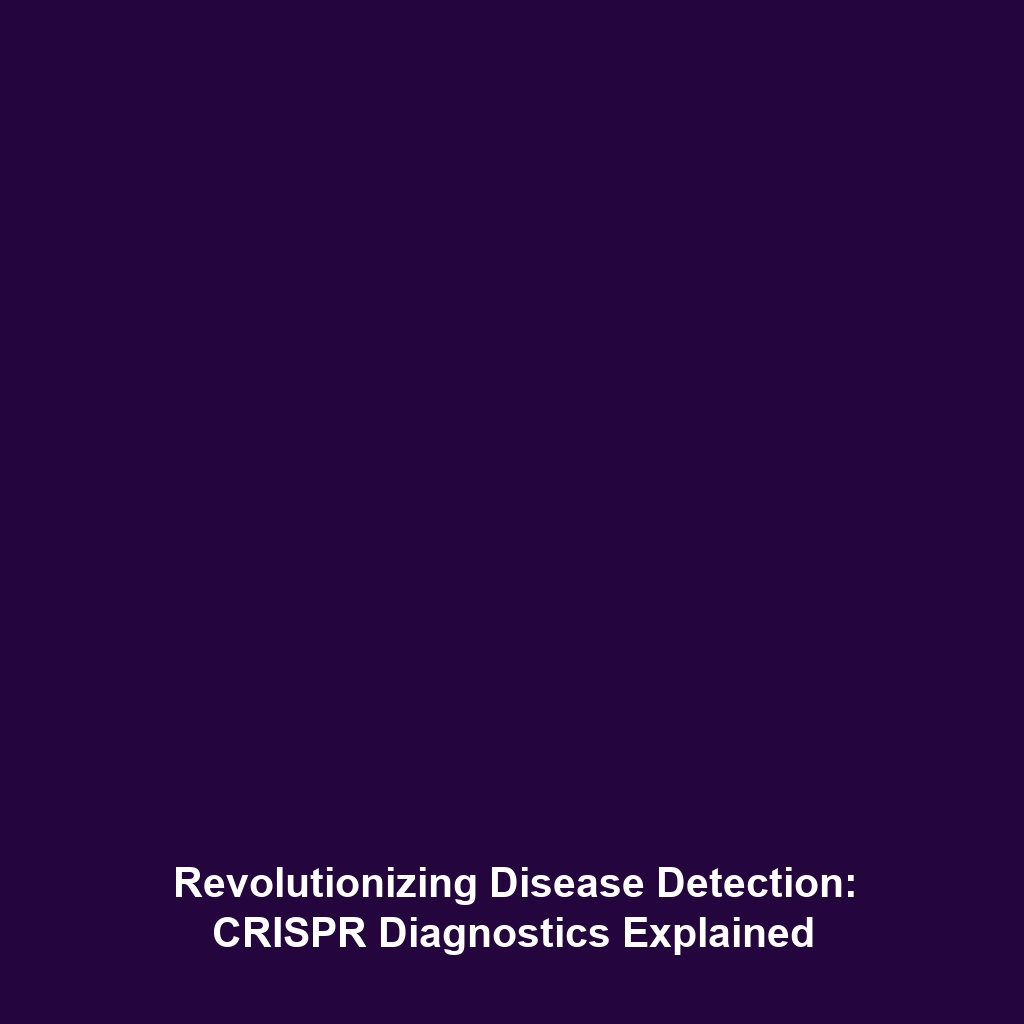CRISPR Diagnostics: Using CRISPR for Detecting Diseases
The emergence of CRISPR Diagnostics has revolutionized the landscape of disease detection, marking a significant advancement in the field of CRISPR Gene Editing. By providing rapid and accurate methods for identifying genetic markers associated with various diseases, CRISPR technology has the potential to enhance healthcare outcomes globally. This article delves into the concepts, applications, challenges, and future research concerning CRISPR Diagnostics, emphasizing its significance within the broader scope of gene editing technologies.
Key Concepts of CRISPR Diagnostics
CRISPR Diagnostics utilizes the powerful CRISPR-Cas system to identify specific nucleic acid sequences related to pathogens or genetic disorders. Key concepts include:
- CRISPR-Cas System: A naturally occurring defense mechanism in bacteria, which is repurposed for gene editing and diagnostics.
- Targeted Detection: CRISPR allows for the precise identification of unique genetic sequences, aiding in the diagnosis of diseases caused by specific pathogens.
- Rapid Testing: CRISPR-based methods can deliver faster results compared to traditional diagnostic techniques.
Applications and Real-World Uses
CRISPR Diagnostics has been effectively translated into several practical applications in the realm of disease detection, such as:
- Disease Outbreak Monitoring: CRISPR technology is utilized to quickly identify outbreaks of infectious diseases, accelerating the response time for public health interventions.
- Personalized Medicine: The capability of CRISPR to identify genetic predispositions allows for tailored therapeutic strategies.
- Point-of-Care Testing: CRISPR-based assays can be employed in decentralized healthcare settings for immediate disease detection, facilitating timely diagnosis and treatment.
Current Challenges in CRISPR Diagnostics
Despite its potential, the implementation of CRISPR Diagnostics faces several challenges, including:
- Regulatory Hurdles: Navigating the complex approval processes for clinical use.
- Technical Limitations: Ensuring the specificity and sensitivity of CRISPR-based tests in diverse samples.
- Public Perception: Addressing concerns related to gene editing technologies and their ethical implications.
Future Research and Innovations
The horizon of CRISPR Diagnostics is filled with promising innovations. Upcoming research focuses on:
- Next-Generation Sequencing: Integrating CRISPR with advanced sequencing technologies to enhance diagnostic capabilities.
- Multiplex Testing: Developing assays that can simultaneously detect multiple pathogens or genetic markers.
- AI Integration: Utilizing artificial intelligence to improve the accuracy and efficiency of CRISPR diagnostic tools.
Conclusion
CRISPR Diagnostics represents a groundbreaking advancement in disease detection, reflecting the broader capabilities of CRISPR Gene Editing. As research progresses, it promises to reshape diagnostics, leading to more accurate, faster, and tailored healthcare solutions. For further reading on related topics, check out our articles on CRISPR Applications and Challenges in CRISPR Gene Editing.
